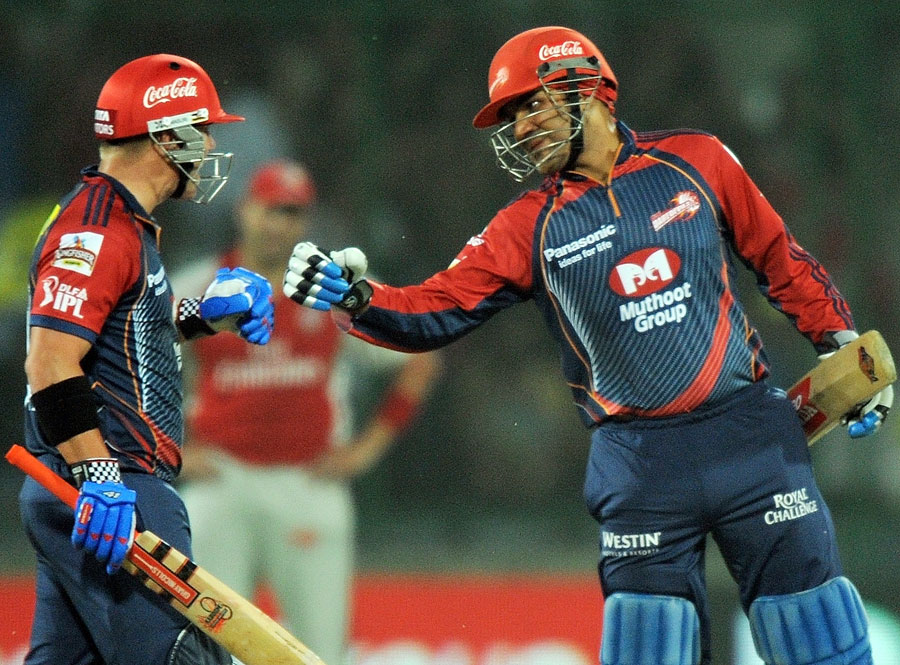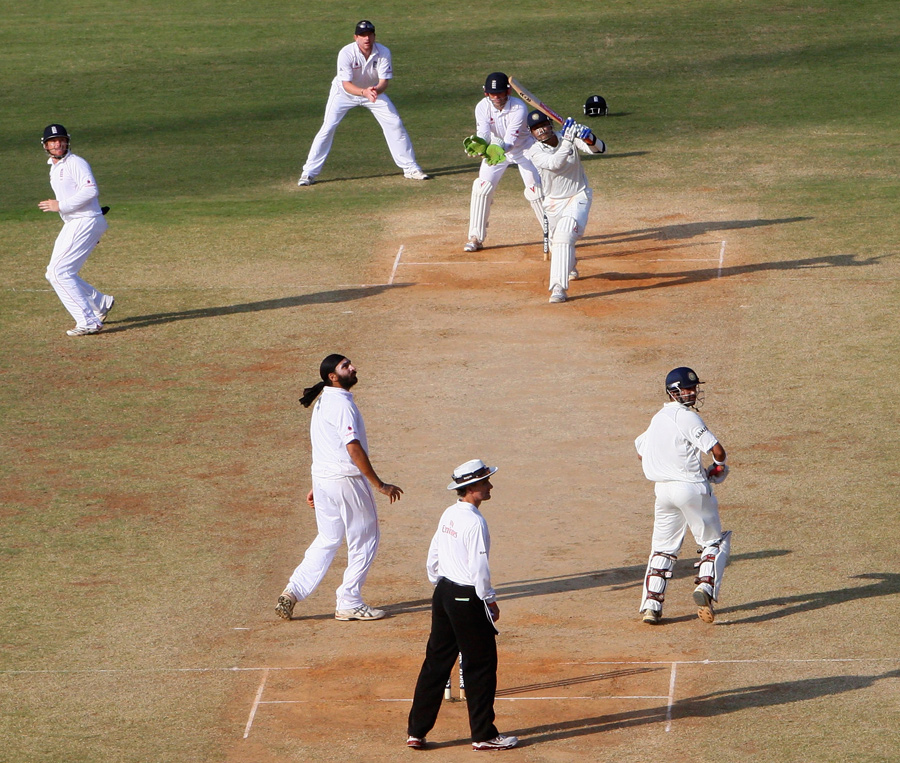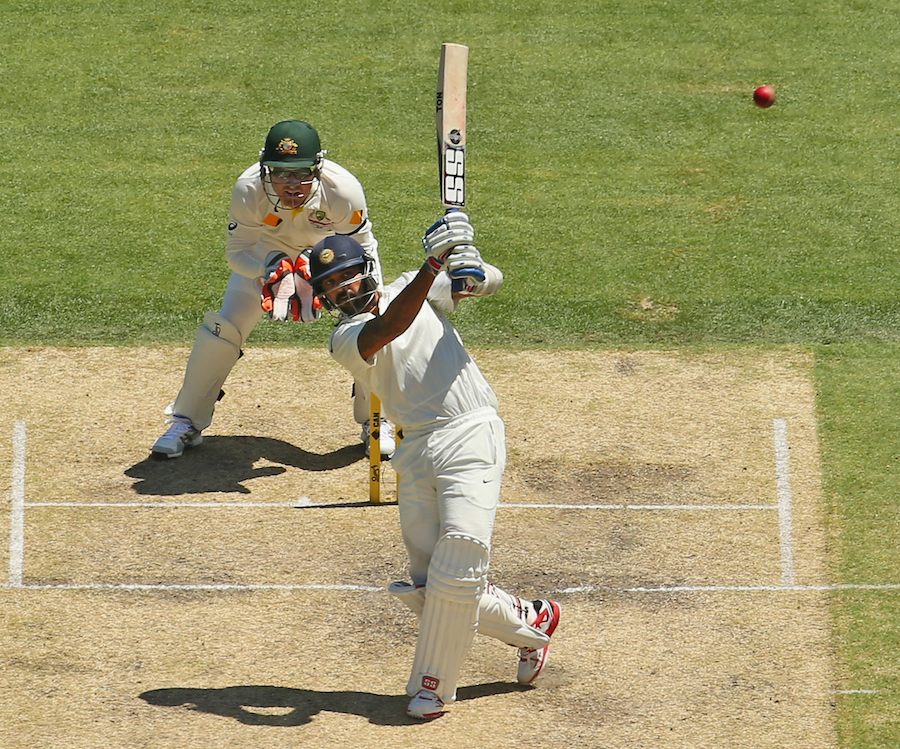There’s been an outbreak of egg-and-bacon-striped handbags at dawn. Sir John Major’s resignation from the Main Committee of the MCC, in a row about redevelopment plans at Lord’s, has triggered a furious war of words in St John’s Wood.
Put simply, the former prime minister took umbrage at the process by which the MCC decided to downgrade the project. He then claimed that Phillip Hodson, the club’s president, publicly misrepresented his reasons for resigning, and in response Sir John wrote an open letter to set the record straight, in scathing terms.
The saga has been all over the cricket press, and even beyond, in recent weeks – underlining the anomalously prominent role the MCC continues to maintain within the eccentric geography of English cricket.
To this observer it’s both puzzling and slightly troubling that the people who run cricket, and the mainstream media who report on it, remain so reverentially fascinated by an organisation whose function has so little resonance for the vast majority of people who follow the game in this country.
Virtually anything the Marylebone Cricket Club do or say is news – and more importantly, cricket’s opinion-formers and decision-makers attach great weight to its actions and utterances. Whenever Jonathan Agnew interviews an MCC bigwig during the TMS tea-break – which is often – you’d think from the style and manner of the questioning that he had the prime minister or Archbishop of Canterbury in the chair.
Too many people at the apex of cricket’s hierarchy buy unthinkingly into the mythology of the MCC. Their belief in it borders on the religious. A divine provenance and mystique are ascribed to everything symbolised by the red and yellow iconography. The club’s leaders are regarded as high priests, their significance beyond question.
The reality is rather more prosaic. The MCC is a private club, and nothing more. It exists to cater for the wishes of its 18,000 members, which are twofold: to run Lord’s to their comfort and satisfaction, and to promote their influence within cricket both in England and abroad. The MCC retains several powerful roles in the game – of which more in a moment.
You can’t just walk up to the Grace Gates and join the MCC. Membership is an exclusive business. To be accepted, you must secure the endorsement of four existing members, of whom one must hold a senior rank, and then wait for twenty years. Only four hundred new members are admitted each year. But if you’re a VIP, or have influential friends in the right places, you can usually contrive to jump the queue.
Much of the MCC’s clout derives from its ownership of Lord’s, which the club incessantly proclaims to be ‘the home of cricket’. This assertion involves a distorting simplification of cricket’s early history. Lord’s was certainly one of the most important grounds in the development of cricket from rural pastime to national sport, but far from the only one. The vast majority of pioneering cricketers never played there – partly because only some of them were based in London.
Neither the first test match in England, not the first test match of all, were played at Lord’s. The latter distinction belongs to the MCG, which to my mind entitles it to an equal claim for history’s bragging rights.
The obsession with the status of Lord’s is rather unfair to England’s other long-established test grounds, all of whom have a rich heritage. If you were to list the most epic events of our nation’s test and county history, you’d find that only a few of them took place at Lord’s. Headingley provided the stage for the 1981 miracle, for Bradman in 1930, and many others beside. The Oval is where test series usually reach their climax. In 2005, Edgbaston witnessed the greatest match of all time.
Lord’s is only relevant if you are within easy reach of London. And personally, as a spectator, the place leaves me cold. I just don’t feel the magic. Lord’s is too corporate, too lacking in atmosphere, and too full of people who are there purely for the social scene, not to watch the cricket.
Nevertheless, Lord’s gives the MCC influence, which is manifested in two main ways. Firstly, the club has a permanent seat on the fourteen-member ECB Board – the most senior decision-making tier of English cricket. In other words, a private club – both unaccountable to, and exclusive from, the general cricketing public – has a direct say in the way our game is run. No other organisation of its kind enjoys this privilege. The MCC is not elected to this position – neither you nor I have any say in the matter – which it is free to use in furtherance of its own interests.
The MCC is cricket’s version of a hereditary peer – less an accident of history, but a convenient political arrangement between the elite powerbrokers of the English game. The reasoning goes like this: because once upon a time the MCC used to run everything, well, it wouldn’t really do to keep them out completely, would it? Especially as they’re such damn good chaps.
Why should the MCC alone enjoy so special a status, and no other of the thousands of cricket clubs in England? What’s so virtuous about it, compared to the club you or I belong to – which is almost certainly easier to join and more accessible.
What’s even more eccentric about the MCC’s place on the ECB board is that the entire county game only has three representatives. In the ECB’s reckoning, therefore, one private cricket club (which competes in no first-class competitions) deserves to have one-third of the power allocated to all eighteen counties and their supporters in their entirety.
The second stratum of MCC’s power lies in its role as custodian of the Laws of Cricket. The club decides – for the whole world – how the game shall be played, and what the rules are. From Dhaka to Bridgetown, every cricketer across the globe must conform to a code laid down in St John’s Wood, and – sorry to keep repeating this point, but it’s integral – by a private organisation in which they have no say.
Admittedly, the ICC is now also involved in any revisions to the Laws, but the MCC have the final say, and own the copyright.
You could make a strong argument for the wisdom of delegating such a sensitive matter as cricket’s Laws to – in the form of MCC – a disinterested body with no sectional interests but the werewithal to muster huge expertise. That’s far better, the argument goes, than leaving it to the squabbling politicians of the ICC, who will act only in the selfish interests of their own nations.
But that said, the arrangement still feels peculiar, in an uncomfortable way. The ICC, and its constituent national boards, may be deeply flawed, but they are at least notionally accountable, and in some senses democratic. You could join a county club tomorrow and in theory rise up the ranks to ECB chairman. The ICC and the boards could be reformed without changing the concept underpinning their existence. None of these are true of the MCC.
Why does this one private club – and no others – enjoy such remarkable privileges? The answer lies in an interpretation of English cricket history which although blindly accepted by the establishment – and fed to us, almost as propaganda – is rather misleading.
History, as they often say, is written by the winners, and this is certainly true in cricket. From the early nineteenth century the MCC used its power, wealth and connections to take control of the game of cricket – first in England, and then the world. No one asked the club to do this, nor did they consult the public or hold a ballot. They simply, and unilaterally, assumed power, in the manner of an autocrat, and inspired by a similar sense of entitlement to that which built the British empire.
This private club, with its exclusive membership, ran test and domestic English cricket, almost on its own, until 1968. Then the Test and County Cricket Board was formed, in which the MCC maintained a hefty role until the creation of the ECB in 1997. The England team continued to play in MCC colours when overseas until the 1990s. Internationally, the MCC oversaw the ICC until as recently as 1993.
All through these near two centuries of quasi-monarchical rule, the MCC believed it was their divine right to govern. They knew best. Their role was entirely self-appointed, with the collusion of England’s social and political elite. At no stage did they claim to represent the general cricketing public, nor allow the public to participate in their processes.
The considerable authority the MCC still enjoys today derives not from its inherent virtues, or any popular mandate, but from its history. Because it has always had a leadership role, it will always be entitled to one.
The other bulwark of the MCC’s authority is predicated on the widespread assumption that the club virtually invented cricket, single-handedly. It was certainly one of the most influential clubs in the evolution of the game, and its codification in Victorian times, but far from the only one, and by no means the first. Neither did the MCC pioneer cricket’s Laws – their own first version was the fifth in all.
Hundreds of cricket clubs, across huge swathes of England, all contributed to the development of cricket into its modern form. The cast of cricket’s history is varied and complex – from the gambling aristocrats, to the wily promoters, the public schools, and the nascent county sides who invented the professional game as we know it now. Tens of thousands of individuals were involved, almost of all whom never went to Lord’s or had anything to thank the MCC for.
And that’s before you even start considering the countless Indians, West Indians, South Africans and especially Australians who all helped shape the dynamics, traditions and culture of our sport.
And yet it was the egg-and-bacon wearers who took all the credit. They appointed themselves leaders, and succeeded in doing so – due to the wealth, power and social connections of their membership. And because the winners write the history, the history says that MCC gave us cricket. It is this mythology which underpins their retention of power in the twenty first century.
Just to get things into perspective – I’m not suggesting we gather outside the Grace Gates at dawn, brandishing flaming torches. This is not an exhortation to storm the MCC’s ramparts and tear down the rose-red pavilion brick by brick until we secure the overthrow of these villainous tyrants.
In many ways the MCC is a force for good. It funds coaching and access schemes, gives aspiring young players opportunities on the ground staff, promotes the Spirit Of Cricket initiative, organises tours to remote cricketing nations, and engages in many charitable enterprises.
Their members may wear hideous ties and blazers, and usually conform to their snobbish and fusty stereotype, but no harm comes of that. As a private club, the MCC can act as it pleases, and do whatever it wants with Lord’s, which is its property.
But the MCC should have no say or involvement whatsoever in the running of English cricket. The club’s powers were never justifiable in the first place, and certainly not in the year 2012. The club must lose its place on the ECB Board. That is beyond argument.
As for the Laws, the MCC should bring their expertise to bear as consultants. But surely now the ultimate decisions should rest with the ICC.
Unpalatable though it may seem to hand over something so precious to so Byzantine an organisation, it is no longer fair or logical to expect every cricketer from Mumbai to Harare to dance to a St John’s Wood tune. This is an age in which Ireland and Afghanistan are playing serious cricket, and even China are laying the foundations. The process must be transparent, global, and participatory.
Cricket is both the beneficiary and victim of its history. No other game has a richer or more fascinating heritage, and ours has bequeathed a value system, international context, cherished rivalries, and an endless source of intrigue and delight.
But history is to be selected from with care – you maintain the traditions which still have value and relevance, and update or discard those which don’t. The role of the MCC is the apotheosis of this principle within cricket. For this private and morally remote club to still wield power in 2012 is as anachronistic as two stumps, a curved bat, and underarm bowling.






